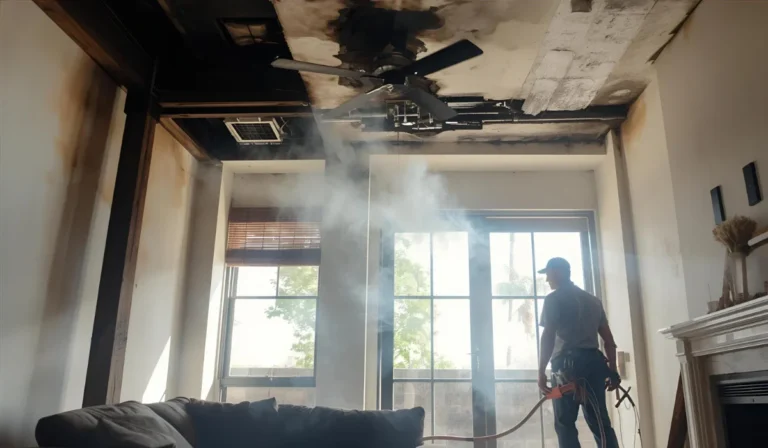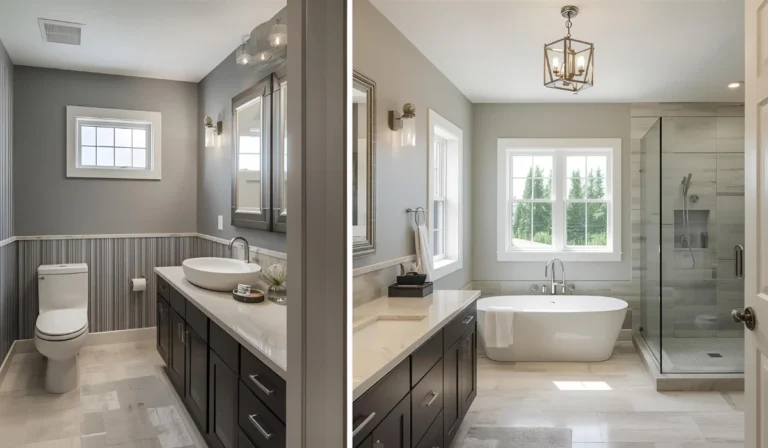The presence of hidden mold after a leak is rarely signaled by visible growth, but by indirect signs. The primary signs are a distinct musty odor, noticeable changes in the materials closest to the leak (such as peeling paint or warped baseboards), and unexplained chronic health issues.
Even a small water leak can start a big problem. Mold needs only 24 to 48 hours to begin growing once moisture is present. Since baseboards sit right at the floor level, they often absorb water from subtle sources, like a slow pipe leak or seepage from the foundation. Mold starts growing hidden inside the wall cavity or directly behind the trim.
This expert guide helps you detect this unseen threat. You will learn the five most reliable, non-visual signs of mold growth behind your baseboards. Understanding these signs helps you act fast to protect your home’s structure and your family’s health.
Key Takeaways
|
Can a Small Water Leak Cause Mold?
Yes, absolutely. A small, persistent leak is actually one of the most common causes of hidden mold growth.
Mold requires only three things to thrive: moisture, a food source (like drywall or wood), and time. A small, slow leak, such as one from an aging pipe or an appliance line, provides a constant source of moisture that keeps the area damp indefinitely. This dampness feeds mold growth right where you cannot see it: inside the wall cavity or under the floor.
Minor water damage often looks like nothing at all from the outside. The water travels down to the floor level, where gravity causes the damage to be greatest at the baseboards. This is why a swollen baseboard with no visible water is a definite sign of a leak or water being nearby.
5 Key Signs of Hidden Mold Behind Baseboards
Hidden mold rarely announces itself with large, fuzzy spots. Instead, it gives off secondary, non-visual clues that alert you to a moisture problem inside the wall. Look for these five telltale signs around your baseboards:
1. Persistent Musty or Damp Odor
This is the first and most reliable sign of hidden mold. Mold produces gases called Microbial Volatile Organic Compounds (MVOCs). These compounds create a distinct, earthy, damp, or rotten smell.
- The musty smell is strongest near the baseboard.
- The odor persists even after extreme general cleaning and airing out the room.
- This smell signals active mold growth, even if you see no visible mold yet.
2. Warping, Swelling, or Buckling of Materials
Water trapped behind the baseboard causes materials to change their physical shape. This happens when the wood or drywall absorbs the moisture.
- Warped or Buckling Baseboards: The baseboard trim itself might pull away from the wall, bow outwards, or appear crooked.
- Soft or Spongy Walls: The drywall immediately above the baseboard might feel soft or spongy when you press on it, indicating the material is saturated.
- Floor Damage: If the leak travels down, you may see warped or buckling floors near the baseboards.
3. Peeling, Bubbling, or Cracking Paint
Moisture pushes paint and wallpaper away from the wall surface.
- Water trapped in the wall cavity compromises the adhesion of the surface finish.
- Look for paint that is peeling, bubbling, flaking, or crackling right above the baseboard line.
- This visual sign confirms that moisture has infiltrated the area.
4. Unexplained Water Stains or Discoloration
Watch for subtle water stains on the baseboard or the wall immediately above it.
- Stains often appear as irregular yellow, brown, or gray splotches.
- These stains indicate that water has compromised the structure.
- In some cases, you may see small, dark spots at the very top edge of the baseboard where mold attempts to grow outwards.
5. Chronic, Unexplained Health Symptoms
Mold spores become airborne and trigger allergic or respiratory reactions. Symptoms often mimic a persistent cold or allergy.
- Unexplained Coughing and Sneezing: You experience perpetual fits of sneezing or a persistent running nose that does not go away.
- Irritated Eyes and Skin: Symptoms include itchy, red, or watery eyes and skin rashes.
- Fatigue or Headaches: Some individuals experience unusual fatigue or headaches.
- Location Clue: Your symptoms improve significantly when you leave the home (for example, when you go to work) and worsen when you return.
How to Confirm and Address Hidden Mold
Confirming hidden mold requires tools and careful steps.
1. Use a Moisture Meter
A non-invasive moisture meter is the simplest tool for detection. Place the meter against the wall or baseboard in the suspicious area. A high reading confirms elevated moisture levels behind the surface, even if you cannot see the water source.
2. Inspect the Source and Cavity
The water damage is always greatest at the floor level. Carefully remove a small section of the baseboard or an electrical outlet cover near the suspected area. This allows you to check for visual signs of mold inside the wall cavity.
3. Act Fast to Remove Moisture
When the source of moisture is removed, mold tends to dry up and die. Fix the leaking pipe or foundation issue immediately. For small, visible mold spots, you can spray them with white vinegar. However, do not use bleach on subfloor or wood, as bleach is mostly water and can actually feed the mold deeper into the material.
4. Call a Professional
If you suspect mold growth inside the wall cavity, or if you have pre-existing conditions like asthma, it is best to call a professional mold remediation company.
- Professionals use specialized equipment like infrared cameras to locate hidden moisture.
- They ensure the safe removal of moldy materials and prevent the spread of spores.
- Removing mold from inside the walls is dangerous and best left to experts who have protective gear.
FAQs
How To Tell If Mold Is Behind Baseboards?
The most reliable sign is a musty odor. Other key indicators include the baseboard pulling away from the wall (swelling) or the paint and wallpaper bubbling directly above the baseboard line.
What Are The First Signs Of Mold Sickness?
The first signs often resemble chronic allergies or a cold that never goes away, including persistent nasal congestion, unexplained coughing, sneezing, throat irritation, and itchy eyes.
How To Tell If You Have Hidden Mold?
You can suspect hidden mold when a musty smell persists after cleaning, when nearby walls feel soft or spongy, or when you have unexplained health symptoms that improve significantly when you leave the home.
Can A Small Water Leak Cause Mold?
Yes. Mold needs only 24 to 48 hours of constant moisture to begin growing. A small, slow leak provides the perfect damp environment for hidden mold colonies to thrive.
Can I Remove Mold Behind Baseboards Myself, Or Should I Call A Professional?
You can handle very small, isolated surface mold (less than 10 square feet) yourself, but you must first fix the water leak. You should always call a professional mold remediation company if:
- The mold is black, toxic, or covers a large area (more than 10 square feet).
- You or your family have existing respiratory issues (like asthma or allergies).
- The mold is inside the wall cavity or has spread to the insulation, drywall, or subfloor.
- The issue involves a major leak (e.g., flood, burst pipe) or foundation problem.







